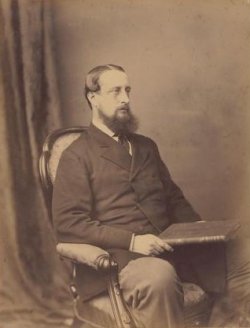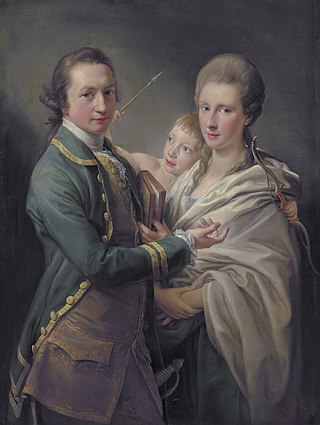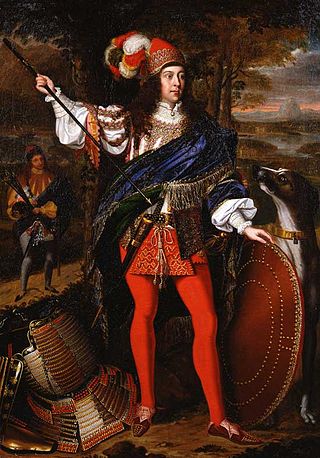Related Research Articles

Earl of Antrim is a title that has been created twice, both times in the Peerage of Ireland and both times for members of the MacDonnell family, originally of Scottish origins.

Somerset Richard Lowry-Corry, 4th Earl Belmore,, styled as Viscount Corry from 1841 to 1845, was an Irish nobleman and Conservative politician who served as Governor of New South Wales from 1868 to 1872.
The Stronge baronetcy of Tynan was conferred in the Baronetage of the United Kingdom on 22 June 1803. The family were northern Irish landowners of Tynan Abbey, County Armagh, also possessing the residence of Lizard Manor, Aghadowey, County Londonderry.
The Battle of the Diamond was a planned confrontation between the Catholic Defenders and the Protestant Peep o' Day Boys that took place on 21 September 1795 near Loughgall, County Armagh, Ireland. The Peep o' Day Boys were the victors, killing some 6 Defenders, with some wounded Peep o day boys in return. It led to the foundation of the Orange Order and the onset of "the Armagh outrages".
Sir John Blackwood, 2nd Baronet was an Irish politician and baronet.
Armar Lowry-Corry, 1st Earl Belmore was an Irish nobleman and politician.

George de la Poer Beresford, 1st Marquess of Waterford, KP, PC (Ire), styled Earl of Tyrone from 1763 to 1789, was an Anglo-Irish politician.
The High Sheriff of Monaghan was the British monarch's representative in County Monaghan, a territory known as his bailiwick. Selected from three nominated people, he held his office for the duration of a year. He had judicial, ceremonial and administrative functions and executed High Court Writs.

Arthur Saunders Gore, 2nd Earl of Arran, KP, PC (Ire), styled The Honourable Arthur Gore from 1758 to 1762 and Viscount Sudley from 1762 to 1773, was an Irish peer and politician.
Henry de la Poer Beresford, 2nd Marquess of Waterford, KP, PC (Ire) styled Lord Le Poer from 1783 until 1789 and Earl of Tyrone from 1789 to 1800, was an Irish peer.
Sir Francis Blundell, 3rd Baronet was an Irish baronet and politician.
Thomas Knox, 1st Earl of Ranfurly, styled The Honourable Thomas Knox between 1781 and 1818 and known as The Viscount Northland between 1818 and 1831, was an Irish peer and politician.
Sir Tristram Beresford, 3rd Baronet was an Anglo-Irish soldier, politician and baronet.

Marcus Beresford, 1st Earl of Tyrone, known as Sir Marcus Beresford, 4th Baronet, until 1720 and subsequently as The Viscount Tyrone until 1746, was an Anglo-Irish peer and politician.

Sir William Verner, 1st Baronet,, was a British soldier who served in the Napoleonic wars, was wounded at the Battle of Waterloo and resigned as a colonel. He served as a politician, including 36 years as a Member of Parliament. Two of his sons were also members of Parliament. Verner was made Knight Commander of the Hanoverian Order and a Baronet, and was Grand Master of Armagh and Orange Order of Ireland.
Sir William Verner, 2nd Baronet, was a British soldier and Conservative Party politician.
Sir Paul Davys was an Irish politician and civil servant, who held office as Clerk to the Privy Council of Ireland and later as Secretary of State (Ireland). He had considerable influence in public affairs, and enjoyed the close friendship of the Lord Lieutenant, James Butler, 1st Duke of Ormonde. His sons, William and John, both attained high office. He was the grandfather of Paul Davys, 1st Viscount Mount Cashell.
Sir William Edward Hercules Verner, 3rd Baronet was a British baronet. He studied at Eton. From his father, he inherited Churchill estates in Ireland and a home at Eaton Square in London. He died at the age of 30 of cirrhosis of the liver without issue, although he had a stepson he cared for.

Sir Neil O'Neill, 2nd Baronet of Killeleagh, County Antrim, was an Irish Jacobite, soldier and the Lord of Clandeboye, a powerful clan of the ancient Northern Uí Néill.
Sir Claud Hamilton was constable of the Fort of Toome in County Antrim, Ulster, Ireland. He is sometimes confused with Claud Hamilton of Shawfield.
References
- 1 2 3 4 5 6 John Kerr. "Churchill - Home of the Verners". Craigavon Historical Society. Retrieved 8 December 2013.
- 1 2 Somerset Richard Lowry-Corry Earl of Belmore (1887). Parliamentary Memoirs of Fermanagh and Tyrone, from 1613 to 1885. Alex. Thom & Company. p. 312.
- 1 2 3 4 5 6 John Burke (1852). A Genealogical and Heraldic Dictionary of the Peerage and Baronetage of the British Empire. Colburn & Company. p. 1008.
- 1 2 Ph.D. Steven Jackson (2008). The Irish Ancestry of Stonewall Jackson. Lulu.com. p. 63. ISBN 978-1-920315-00-9.
- ↑ Ireland. Parliament. House of Commons (1795). The Parliamentary Register: Or, History of the Proceedings and Debates of the House of Commons of Ireland. J. Porter, P. Byrne, and W. Porter. p. 135.
- ↑ Charles Roger Dod (1856). The Peerage, Baronetage, and Knightage of Great Britain and Ireland, for ...: Including All the Titled Classes. Whittaker and Co. p. 547.